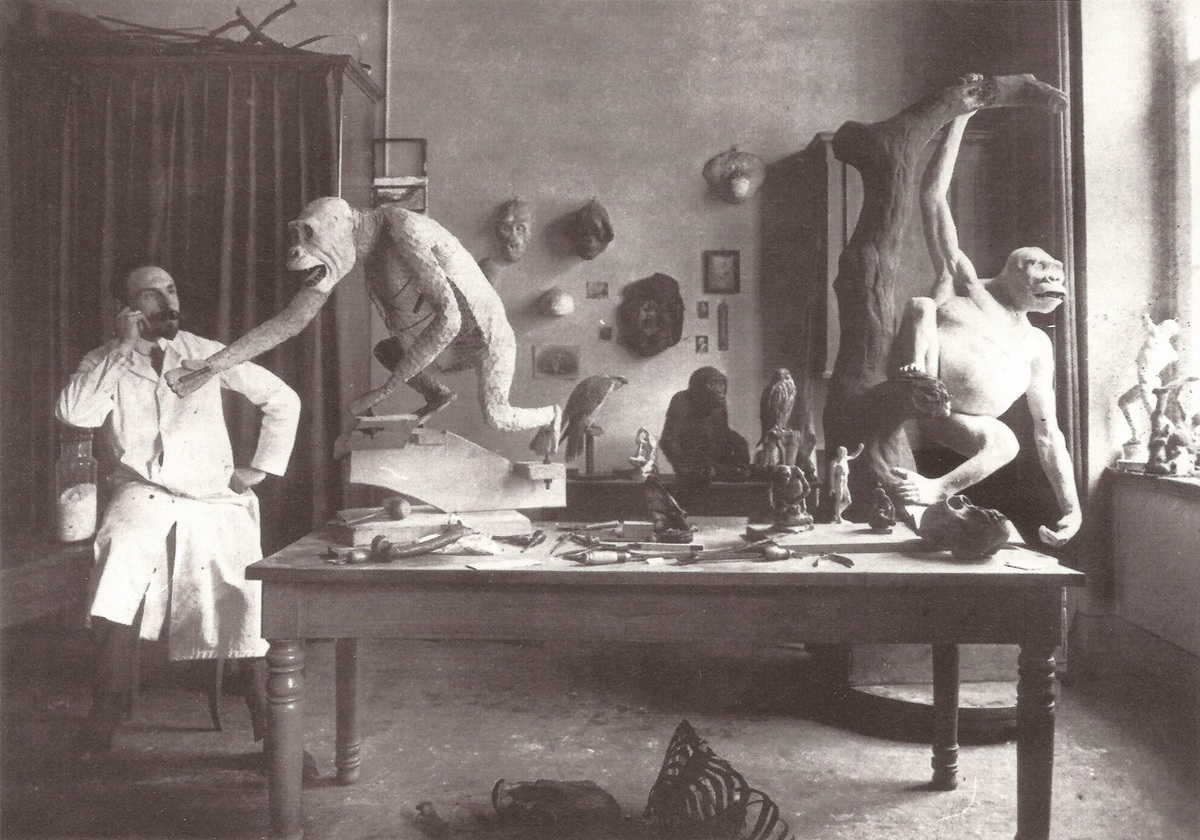Hermanus Hendrikus ter Meer in His Taxidermy Studio at the Zoological Institute of the University of Leipzig (1910)
Abstract
As a method of preserving, displaying, and storing the artifacts of knowledge, taxidermy straddled the border between artistry and scientific reconstruction. During the nineteenth century, taxidermy and its practitioners gained increasing prominence. Taxidermists could be found throughout Germany, from the hushed hunting woodlands of western Westphalia to the natural history museums of bustling cities. One of the leading taxidermists in Germany was not German. He was the Dutch practitioner Hermanus Hendrikus ter Meer, who, in 1907, was hired by the Zoological Institute of the University of Leipzig. There, he refurbished specimens collected during the famous Valdivia-Expedition (1898-99), the first great German oceanographic research voyage to the deep seas. The trip itself was in keeping with the broad nineteenth-century enterprise of identifying, describing, and organizing all types of animals into taxonomies. His renown in the field was in no way diminished by his groundbreaking work in the related field of plastic surgery, which drew upon his extensive knowledge of anatomy.
Source

Source: Naturkundemuseum (Museum of Natural History) Leipzig. “Von der Kunst der lebendigen Darstellung,” published with friendly permission from the blog Schemenkabinett, January 19, 2016, http://www.schemenkabinett.de/von-der-kunst-der-lebendigen-darstellung/ (last accessed July 22, 2020). Original source of reproduction: Christine Becker, Wie ein zweites Leben: der Tierbildner Herman H. ter Meer. Leipzig: Passage-Verlag, 2004.